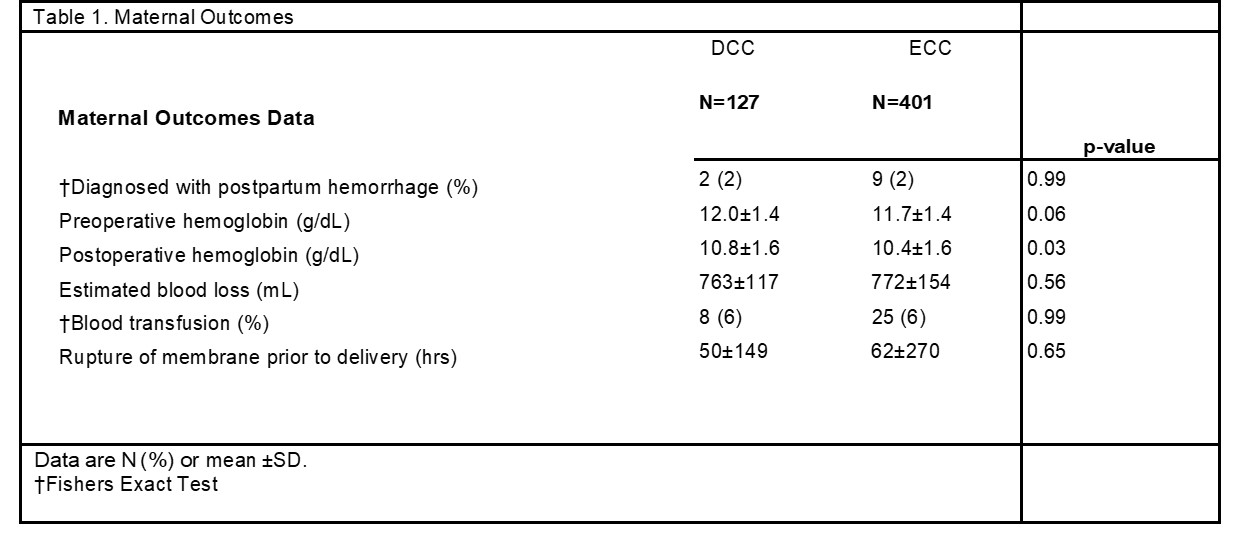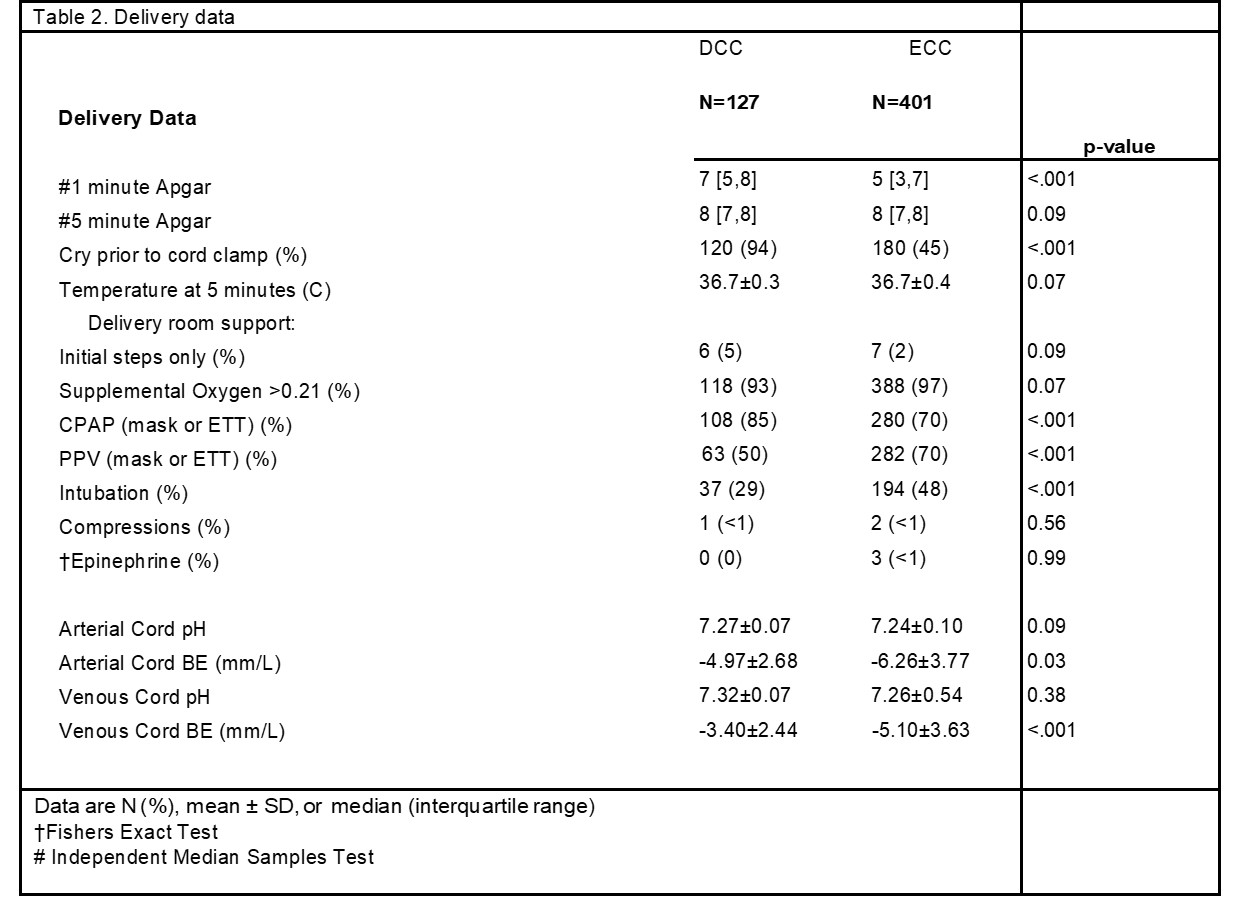Neonatal General
Category: Abstract Submission
Neonatology General 5
405 - Maternal bleeding complications following early versus delayed umbilical cord clamping in preterm pregnancies
Friday, April 22, 2022
6:15 PM - 8:45 PM US MT
Poster Number: 405
Publication Number: 405.135
Publication Number: 405.135
Catherine Salcido, Neonatal Research Institute at Sharp Mary Birch Hospital for Women and Newborns, San Diego, CA, United States; Soha A. Shahidi, Neonatal Research Institute, Encinitas, CA, United States; Debra M. Poeltler, Sharp HealthCare, San Diego, CA, United States; Anup Katheria, Sharp Mary Birch Hospital for Women & Newborns, SAN DIEGO, CA, United States

Catherine Salcido, BS
Clinical Research Coordinator
Neonatal Research Institute at Sharp Mary Birch Hospital for Women and Newborns
San Diego, California, United States
Presenting Author(s)
Background: The American College of Obstetricians and Gynecologists recommend delaying clamping and cutting of the umbilical cord clamping by at least 30 to 60 seconds regardless of delivery mode for preterm and term infants. Despite neonatal benefits of delayed umbilical cord clamping, research on maternal safety associated with umbilical cord treatments at ceserean section is lacking. Evidence is particularly limited for very low birthweight (VLBW) preterm infants born by cesarean section. Since most preterm births occur via cesarean section an evaluation of maternal outcomes is critical in this population.
Objective: To identify whether delayed cord clamping of at least 60 seconds (DCC) increased the risk of postpartum hemorrhage compared to early cord clamping (ECC, defined as less than 60 seconds) in VLBW preterm cesarean section deliveries.
Design/Methods: A retrospective study was conducted to determine the effect of delayed cord clamping of at least 60 seconds DCC on maternal blood loss in preterm infants delivered at three Sharp Healthcare hospitals in San Diego, CA from 2018 to September 2021.
Results: 528 VLBW preterm infants were delivered by Cesarean section had data available for analysis. 127 infants received DCC (24%). 401 infants received ECC (76%). Post-operative hemoglobin levels were higher in mothers with DCC (10.8 vs 10.4, p=0.03). There was no difference in postpartum hemorrhage or estimated blood loss during DCC compared to ECC. Infants receiving early cord clamping were more preterm, lower birthweight, had lower 1-minute Apgar scores, and needed more resuscitation (Table 2 and 3). Neonates receiving early cord clamping had increased mortality (11 vs 6 percent, p=0.04) but after adjusting for gestational age there was no difference. (OR=0.548, 95% 0.221,1.363).Conclusion(s): Delayed cord clamping for at least 60 seconds appears to be safe for women undergoing a Cesarean section for preterm delivery. Further studies including longer durations of delayed cord clamping on maternal safety outcome at cesarean section are needed.
Table 1. Maternal Outcomes
Table 2. Delivery data
Objective: To identify whether delayed cord clamping of at least 60 seconds (DCC) increased the risk of postpartum hemorrhage compared to early cord clamping (ECC, defined as less than 60 seconds) in VLBW preterm cesarean section deliveries.
Design/Methods: A retrospective study was conducted to determine the effect of delayed cord clamping of at least 60 seconds DCC on maternal blood loss in preterm infants delivered at three Sharp Healthcare hospitals in San Diego, CA from 2018 to September 2021.
Results: 528 VLBW preterm infants were delivered by Cesarean section had data available for analysis. 127 infants received DCC (24%). 401 infants received ECC (76%). Post-operative hemoglobin levels were higher in mothers with DCC (10.8 vs 10.4, p=0.03). There was no difference in postpartum hemorrhage or estimated blood loss during DCC compared to ECC. Infants receiving early cord clamping were more preterm, lower birthweight, had lower 1-minute Apgar scores, and needed more resuscitation (Table 2 and 3). Neonates receiving early cord clamping had increased mortality (11 vs 6 percent, p=0.04) but after adjusting for gestational age there was no difference. (OR=0.548, 95% 0.221,1.363).Conclusion(s): Delayed cord clamping for at least 60 seconds appears to be safe for women undergoing a Cesarean section for preterm delivery. Further studies including longer durations of delayed cord clamping on maternal safety outcome at cesarean section are needed.
Table 1. Maternal Outcomes

Table 2. Delivery data

